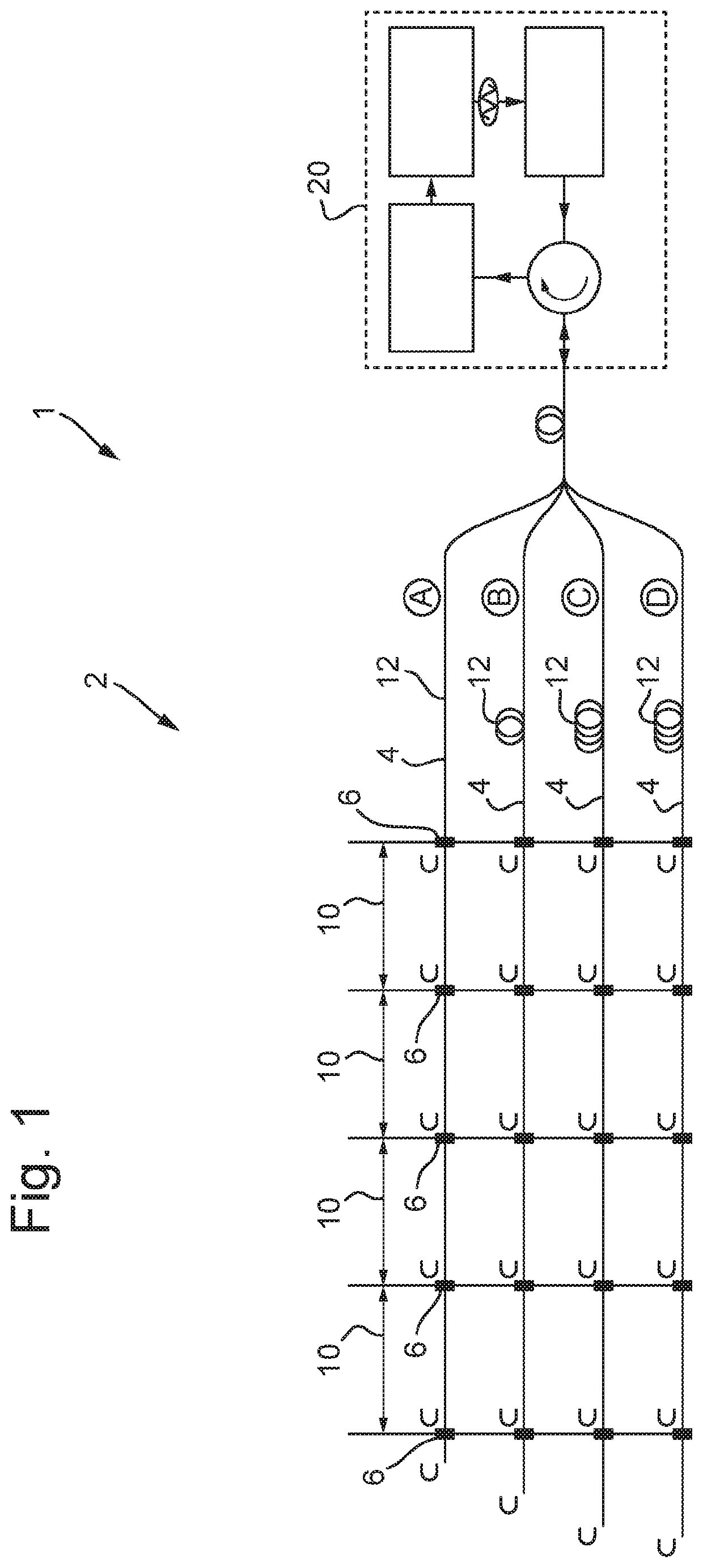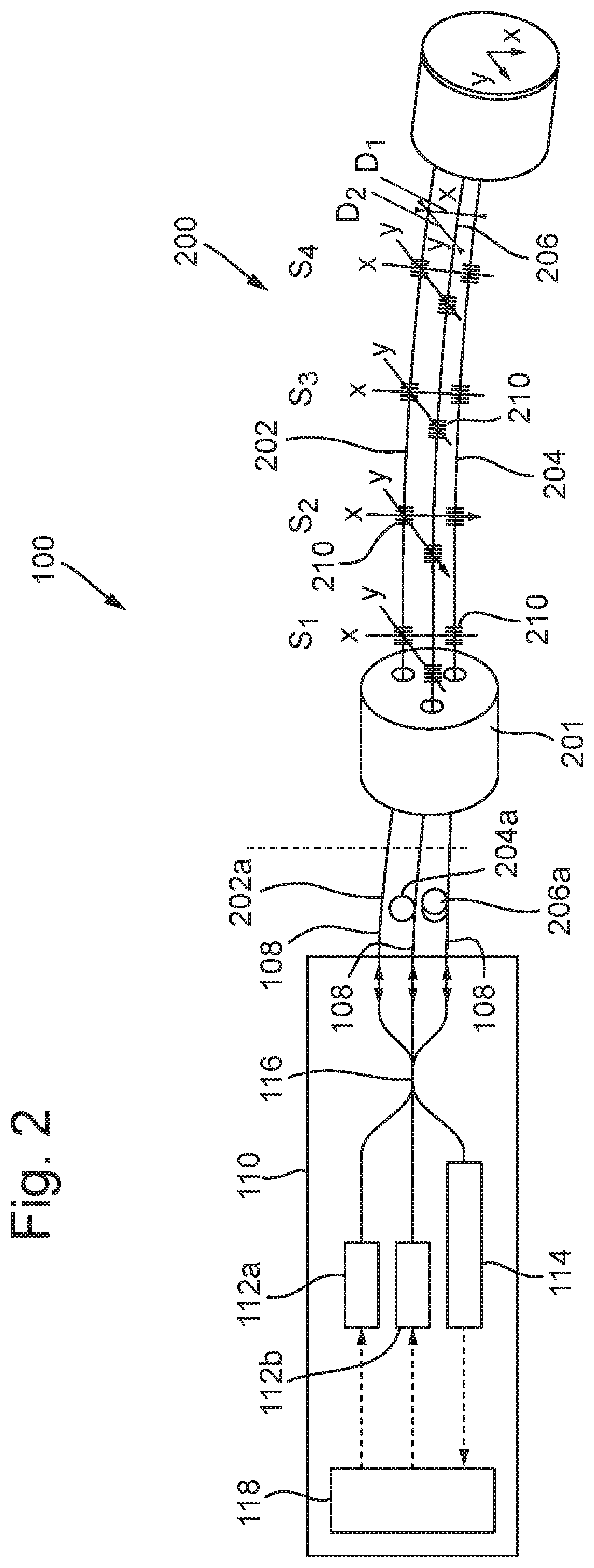An optical shape sensing method and system
- Summary
- Abstract
- Description
- Claims
- Application Information
AI Technical Summary
Benefits of technology
Problems solved by technology
Method used
Image
Examples
Embodiment Construction
[0050]With reference to FIG. 2, an optical shape sensing system 100 according to arrangements of the present disclosure comprises an interrogation unit 110, and a fibre optic curvature sensor 200.
[0051]The interrogation unit 110 comprises first and second lasers 112a, 112b arranged to provide laser light to the fibre optic curvature sensor 200. The curvature sensor 200 is an interferometric sensing device configured to cause reflections of light from the laser to interfere with one another to produce an interferometric signal.
[0052]Optical fibres 108 extend between the interrogation unit 110 and the fibre optic curvature sensor 200 to carry light from the lasers 112a, 112b to the curvature sensor 200. The optical fibres 108 are also configured to carry the interferometric signal from the fibre optic curvature sensor 200 back to the interrogation unit 110.
[0053]The interrogation unit 110 further comprises a detector 114 arranged to receive the interferometric signal from the fibre op...
PUM
 Login to View More
Login to View More Abstract
Description
Claims
Application Information
 Login to View More
Login to View More - R&D
- Intellectual Property
- Life Sciences
- Materials
- Tech Scout
- Unparalleled Data Quality
- Higher Quality Content
- 60% Fewer Hallucinations
Browse by: Latest US Patents, China's latest patents, Technical Efficacy Thesaurus, Application Domain, Technology Topic, Popular Technical Reports.
© 2025 PatSnap. All rights reserved.Legal|Privacy policy|Modern Slavery Act Transparency Statement|Sitemap|About US| Contact US: help@patsnap.com



